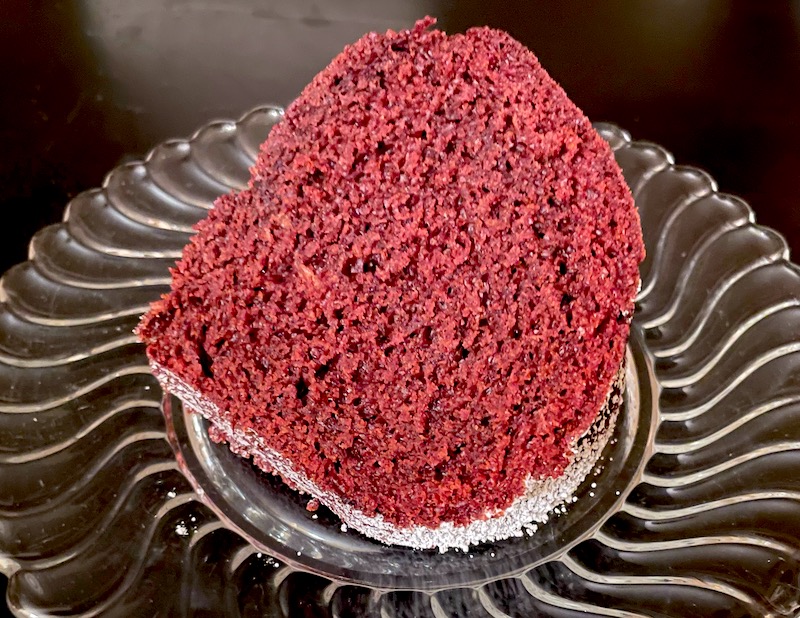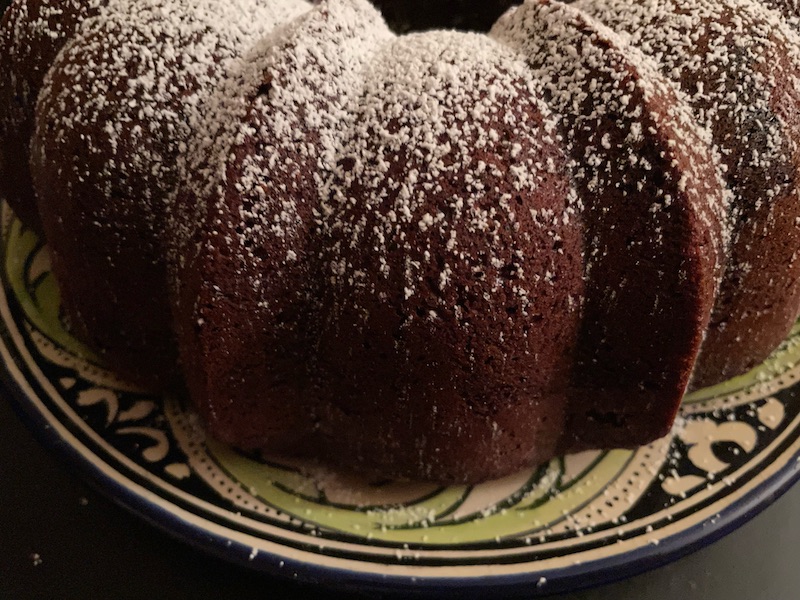
Got Sourdough Discard? Make This Luscious Chocolate Cake!
It's the bane of a sourdough aficionado's life: What to do with all the discard? You see, when you get ready to make something with your starter, first it must be fed, which basically means refreshing or “activating” the starter by adding more flour and water for the bacteria to feed on.
 When it's all bubbly and ready to go to work, you'll need to save out a bit for your next project down the road, then take out however much you need for the job at hand. That leaves about half of that ready-to-rock starter sitting there staring at you.
When it's all bubbly and ready to go to work, you'll need to save out a bit for your next project down the road, then take out however much you need for the job at hand. That leaves about half of that ready-to-rock starter sitting there staring at you.
Which is why it's so heartbreaking to toss it in the compost. If you're like Dave, it gets added to a vat of old starter that's been sitting in the back of the fridge for weeks getting a black-ish liquid building up on top of it. Not pretty. But there are only so many friends you can gift with starter, and only so many pancakes, waffles, bagels, etc., etc., that one (small) family can reasonably consume.
Thus the (tragic) discard issue.
 Fortunately Dave is always on the prowl for recipes using sourdough discard, and is a dedicated fan of the encyclopedic videos and recipes of employee-owned King Arthur Flour—he and their star instructors like Martin (Philip), Gesine (Bullock-Prado) and Jeffrey (Hamelman) are on a first-name basis at this point. Which is where he ran across a recipe for a lusciously decadent chocolate cake that calls for no less than a cup of discarded starter.
Fortunately Dave is always on the prowl for recipes using sourdough discard, and is a dedicated fan of the encyclopedic videos and recipes of employee-owned King Arthur Flour—he and their star instructors like Martin (Philip), Gesine (Bullock-Prado) and Jeffrey (Hamelman) are on a first-name basis at this point. Which is where he ran across a recipe for a lusciously decadent chocolate cake that calls for no less than a cup of discarded starter.
He's used both discarded and fresh starter, and whatever organic all-purpose flour we have in the pantry—the recipe also calls for a teaspoon of espresso powder, which we don't have, and it turns out perfectly anyway. It can be baked in a bundt pan (top photo) or a rectangular baking pan, which only needs to be buttered and dusted with flour to come out like a charm.
Sourdough Chocolate Cake
Adapted from King Arthur Baking.
1 c. (227g) sourdough starter, ripe (fed) or discard
1 c. (227g) milk
2 c. (240g) all-purpose flour
1 1/2 c. (298g) granulated sugar
1 c. (198g) vegetable oil
2 tsp. vanilla extract
1 tsp. fine sea salt
1 1/2 tsp. baking soda
3/4 c. (64g) cocoa powder
2 large eggs
Combine the starter, milk and flour in a large mixing bowl. Cover and let rest at room temperature for 2 to 3 hours. It won't necessarily bubble, but it may have expanded a bit.
Preheat the oven to 350°F. Lightly butter a bundt pan and dust with flour (you can also use a 9" by 13" baking pan).
In a stand mixer at a low-medium setting (or separate bowl if you're doing it by hand), beat together the sugar, oil, vanilla, salt, baking soda and cocoa. The mixture will be grainy. Add the eggs one at a time, beating well after each addition.
On the lowest setting of the mixer, gently mix in the starter-flour-milk mixture until smooth. (The recipe says it will be gloppy at first, but the batter will smooth out.)
Pour the batter into the prepared pan and bake for 30 to 45 minutes, until a cake tester inserted into the thickest part of the bundt pan comes out clean.
Remove the cake from the oven and set it on a rack to cool. If using a bundt pan, let it cool for 20 minutes before inverting it onto a platter and removing the pan. Allow it to cool completely. (The recipe on the website also has instructions for an icing that can be drizzled over the cake.)